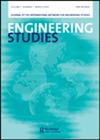Gender Equality Perceptions of Future Engineers
IF 1.3
3区 工程技术
Q2 EDUCATION, SCIENTIFIC DISCIPLINES
引用次数: 2
Abstract
Gender bias is important in our society not only from the point of view of ethics and human rights but also from a pragmatic engineering point of view. Universities are aware of this issue and develop equality plans, some of them including specific actions like education in gender equality. We ask, how effective are these actions? And, are there any differences in the perception of gender equality between social sciences/humanities and engineering university students? In order to answer these questions, a case study of the Spanish university system was carried out by comparing equality perception in the students of two universities: the Universidad de Valencia Estudio General and the Universitat Politècnica de València. For this purpose, 338 questionnaires were filled in by university students and were processed in two academic years (2015/2016 and 2016/2017), and at two different moments: before (225) and after (113) receiving a gender equality course. Results show the main differences in gender perception among Engineering and Social Sciences students, and the importance of gender courses.未来工程师的性别平等观念
性别偏见在我们的社会中很重要,不仅从伦理和人权的角度来看,而且从实用工程的角度来看。大学意识到了这个问题,并制定了平等计划,其中一些包括性别平等教育等具体行动。我们会问,这些行动的效果如何?社会科学/人文学科和工程专业的学生对性别平等的看法有什么不同吗?为了回答这些问题,通过比较瓦伦西亚大学和瓦伦西亚政治大学两所大学的学生对平等的看法,对西班牙大学系统进行了案例研究。为此,大学生填写了338份问卷,在两个学年(2015/2016和2016/2017),在两个不同的时刻:在(225)之前和(113)之后接受性别平等课程。结果显示,工科学生和社会科学学生在性别认知上的主要差异,以及性别课程的重要性。
本文章由计算机程序翻译,如有差异,请以英文原文为准。
求助全文
约1分钟内获得全文
求助全文
来源期刊

Engineering Studies
ENGINEERING, MULTIDISCIPLINARY-HISTORY & PHILOSOPHY OF SCIENCE
CiteScore
3.60
自引率
17.60%
发文量
12
审稿时长
>12 weeks
期刊介绍:
Engineering Studies is an interdisciplinary, international journal devoted to the scholarly study of engineers and engineering. Its mission is threefold:
1. to advance critical analysis in historical, social, cultural, political, philosophical, rhetorical, and organizational studies of engineers and engineering;
2. to help build and serve diverse communities of researchers interested in engineering studies;
3. to link scholarly work in engineering studies with broader discussions and debates about engineering education, research, practice, policy, and representation.
The editors of Engineering Studies are interested in papers that consider the following questions:
• How does this paper enhance critical understanding of engineers or engineering?
• What are the relationships among the technical and nontechnical dimensions of engineering practices, and how do these relationships change over time and from place to place?
 求助内容:
求助内容: 应助结果提醒方式:
应助结果提醒方式:


